I realized last week just how spoiled I am to have the South Fork of the Snake River in my backyard. It’s a painfully predictable river that sports typical western river features, like tailouts, wood close to the banks, undercut banks and braided channels that offer some of the best dry-fly and soft-hackle fishing anywhere.
And each of the features is easy to identify — they are obvious fish holders for the South Fork’s big cutthroats and rainbows and for its surly browns. Dare I say, it’s an easy river to read … and, often, an easy river to fish. But then I drove north, to the far reaches of northwest Montana, just shy of the British Columbia border, to the Kootenai River that flows from the depths of Lake Koocanusa. Higher up, the river picks up several of BC’s famous trout rivers, like the Elk, the Bull and the St. Mary. The lake straddles the international border, and the Kootenai doesn’t reappear until it flows from the bottom of the dam above the town of Libby, Mont.
And from there, downstream for hundreds of miles, the Kootenai flows through some of the most scenic and awe-inspiring landscapes in the Northwest. Once it leaves the lake it flows west through the tall fir and spruce country of northwest Montana, into northern Idaho and then back into BC and Kootenay Lake. From there, it flows through Castlegar, B.C., where it joins the Columbia on its journey south and west to the Pacific.
The stretch between the Libby Dam and the Idaho border is most definitely trout water. But it’s different trout water. The Kootenai, in this reach, is on a mission. It leaves the dam, and is immediately joined by the Fisher River. And then it just … flows. It flows over the ancient granite bedrock and, while there are a few spots where it displays some character (like at Kootenai Falls between Libby and Troy), it generally feels like it’s in a hurry. Like it has someplace to be, and it’s running late.
And obvious structure? Not so much. Not unless you really look.
Recently, I had the privilege of fishing the Kootenai with two great guides: Tim Linehan of Linehan Outfitting Co., and Sean McAfee, a lifelong resident of Lincoln County, Mont. and maybe the most knowledgeable guide in the region. Both spent the better part of a day reminding me that the Kootenai’s structure — where it holds its rocket-fueled rainbows — isn’t generally where I expected it to be. Instinctively, I kept pounding the banks with a dry-dropper rig, and every time, either Tim or Sean would offer some gentle criticism.
“Too far, Chris,” one or the other would say. “That water’s a foot deep. Drag and drop. Bring it back 10 feet.”
Once in a while, my dropper, a size 14 Perdigon, would get hung up in the riverside rocks. And yet, my instincts kept pushing me to cast tight to the bank. Like I would on the South Fork. Because that’s where the fish live, right?
But not on the Kootenai. Rarely does a cast to the bank mean a cast into the “money zone” and result in a hookup. Instead, it often results in another dive into the fly box for another Perdigon.

The good news? When Tim or Sean said “drag it and drop it,” they meant it. There was no need to lift the fly and recast — I was simply instructed to come tight to the fly and drag the rig out off the bank into the real money zone. That’s where giant boulders lie under the green current, providing cover for the river’s trout. That’s where the food line lies. That’s where the hookups happen.
“Don’t be afraid to move that dry,” Linehan says. “Sometimes, it pays to show them their food.”
And these big rocks … they could be anywhere, from 10 feet off the bank to the middle of the river. And, after a fashion, I could start to see them — I could identify the color changes in the river from light green to dark green, and I could put flies on that ridge. And that’s when things got fun.
As I said, the Kootenai runs fast. Even though the river might look flat and calm, it’s a mishmash of conflicting currents, influenced by those big rocks that dot the riverbed. It moves, and often it moves fast. Another difference between the Kootenai and other more renowned western rivers? In two days on the water, right before the Fourth of July weekend, I counted only three other boats on the water. This is the Montana everybody thinks of when they daydream of a trip west, not the Montana where the line at the put-in is an hour long.
Yet another difference? The Kootenai is cold. And it stays cold all summer long thanks to its bottom-release flows at the base of the dam. While other Montana rivers might face “hoot-owl” restrictions or even close altogether due to warmer temperatures, the Kootenai stays consistently chilled — it’s ideal for its aggressive redbands, cutthroats and bull trout. It rushes quickly out from the dam and off it goes on its glorious journey through the northern Rockies, pushing and pulling its way downhill, boasting near-constant currents.
Any fish that lives in the Kootenai is going to spend its life in those currents, fighting a river that’s big and sweeping and moving. And that consistent workout pays off. Foot-long rainbows feel like twice the fish when they grab a nymph or roll over on a dry fly. Once hooked, they shoot from the water like a Trident II, and they don’t stop until they’re in the net. The “oohs” and “aahs” and general expressions of wonder from the boat only seem to add fuel to the rainbows’ fire — they are among the liveliest trout I’ve hooked anywhere.
And they get bigger than a foot long. But, given the granite base of the river, the Kootenai isn’t a limestone fish factory. Rather, it’s a steady producer of rainbows and a smattering of west slope cutthroats that hover around 15 inches long. These are the “bread-and-butter” trout of the Kootenai, Linehan would say as I enjoyed regular hookups on our float from Troy to the confluence with the Yaak River.
There are bigger fish, certainly. On a “normal” day, a handful of rainbows that pushed 17 inches will come calling. Once in a great while, a 20-inch behemoth will turn up (these fish are most common directly beneath the dam, and they see a ton of flies over the course of a season) and surprise the hell out of both anglers and their guides, who do their best to manage expectations. In late summer and fall, a streamer on the swing intended for one of these bigger rainbows might just find itself in the maw of a belligerent 20-inch brown trout or a massive, migrating bull trout. These native char get very big — 24-inch bull trout are not uncommon on the Kootenai, and bigger bulls come to hand every August and September. It should be noted, though, that it’s illegal to target bull trout throughout most of Montana, and any fish caught must be released unharmed.

We caught fish just about anywhere. Except, of course, right up next to the bank where my intuitive casts insisted they would be. But, after two days on the river, I caught on. A cast short of the bank, but along a dropoff from two feet to eight feet drew praise from the renowned Linehan.
“That’s it Chris,” he said. “Now just let it hunt.”
Seconds later, the river erupted, and a sizable slab of native redside rainbow trout zipped from the water, a size 12 Purple Haze stuck firmly in the corner of its jaw. It proceeded to go on a reel-squealing run, jumping often and trying like hell to shake itself off the meal that bit back.
“That’s the one,” Linehan said. “That’s what we’ve been looking for.”
And that’s when I realized something. Like the Kootenai’s rainbows, it pays to spread out now and then … to leave the comfort zone of the home river and experience something new.
As it turns out, I was looking for the Kootenai. I just didn’t know it.




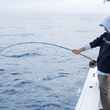


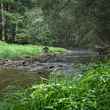



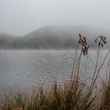




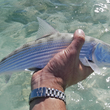




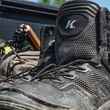




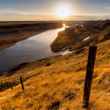
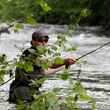

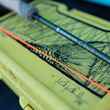
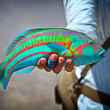
Comments
Michael Lesniak replied on Permalink
Great story Todd!
Paul replied on Permalink
Here I sit in my van in Troy, Montana, January, having just read this article, while my wife thrifts. Can’t wait to get back here this summer and float/fish!!
Pages